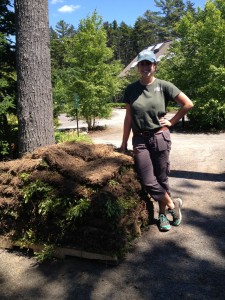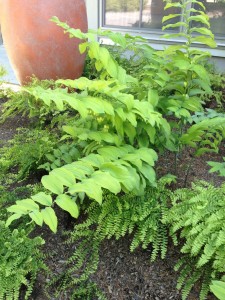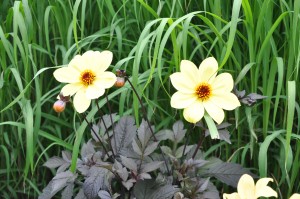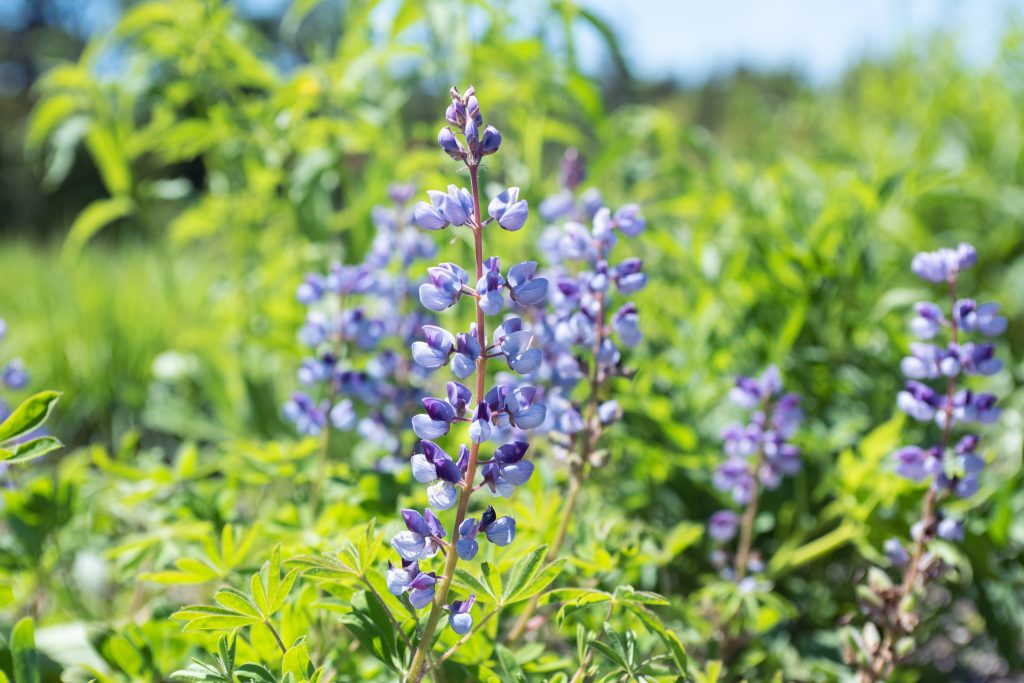If you’ve visited Coastal Maine Botanical gardens this week, you may have noticed that we’re renovating the wild blueberry beds in the Bibby and Harold Alfond Children’s Garden, and let me tell you it is quite the project! The weeds have become too dense to manage so we must resort to removing the infested plantings. We’ll be laying new sod this week to restore the beds to their original beauty – and hopefully it will be weed free. CMBG values stimulating the local economy, so we’ve purchased our sod from Fred’s Wild Sod, Inc., a resident provider of high-quality native sod.
Mainers know that the lowbush blueberry, Vaccinium angustifolium, is not only an important native species, but also a staple agricultural crop of this region. This low-input crop has adapted to the northern coast’s naturally acidic and poorly fertile soils and is able to withstand the harsh winters. Because of its importance to the economy and to the wildlife of Maine, Coastal Maine Botanical Gardens has planted it throughout the gardens to demonstrate how it can be incorporated into many different sites in the landscape. For additional information on wild blueberries, please consult this resource.
This week, staff horticulturist Justin Nichols recruited me to help him compile a list of all the Solomon’s seal varieties we have on the grounds. King Solomon’s seal, or Polygonatum sp., is a genus of herbaceous perennial plants with unique architectural arching stems adorned with attractive bell-like flowers. Our goal is to become a repository for the genus and therefore become officially recognized by the North American Plant Collections Consortium (NAPCC). This organization is working with many botanical gardens across the country to promote plant germplasm preservation, an important task that will help maintain a high level of biodiversity. Collections and Grounds Manager Tom Clark from Polly Hill Arboretum in Martha’s Vineyard is also helping us in this endeavor.
– Montana Williams, Pearson Horticulture Intern





